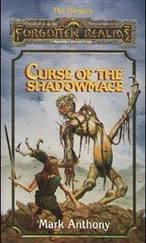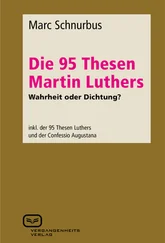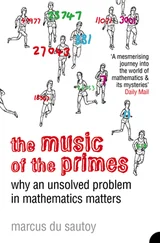In 1888–1889 Vela executed his last public work: the Monument to Giuseppe Garibaldi and the Como Days Uprising of March 1848 ( I), commissioned by the city of Como. This nearly four metres high full-length statue is certainly one of the most imposing portraits of the general (1807–1882). The intense figure is filled with pent-up energy. Dressed in a poncho and holding an unsheathed sword in his right hand, Garibaldi has a daunting, almost ferocious look. His expression and pose reflect not only the inner fire of a freedom fighter, but also his disappointment over the suspect political developments in a recently unified Italy.
Bronze was the most suitable material for representing so formidable a figure. Vela had already developed an expressiveness in modelling to suit the material, as can be seen in Funerary Monument to Maria Demartini Scala (1879–1882, VI) and Monument to Agostino Bertani (1887, VII) in Milan, drawing on the experience gained in his reliefs. The figure of Garibaldi has a sketchy quality, to the extent of directly referencing the innovations of the young Medardo Rosso and the Italian Impressionists, namely the Scapigliati and Macchiaioli .
Much of 19th century sculpture is difficult to view. Apart from the works of leading exponents like Canova and Rodin, those of other sculptors – even the once famous – are stowed away in museum storerooms. The grandiose mausoleums in cemeteries are falling to pieces, while the sad monuments still standing in squares have become annoying obstacles to traffic, when they have not actually been moved to an out-of-the-way site or disposed of with the garbage.
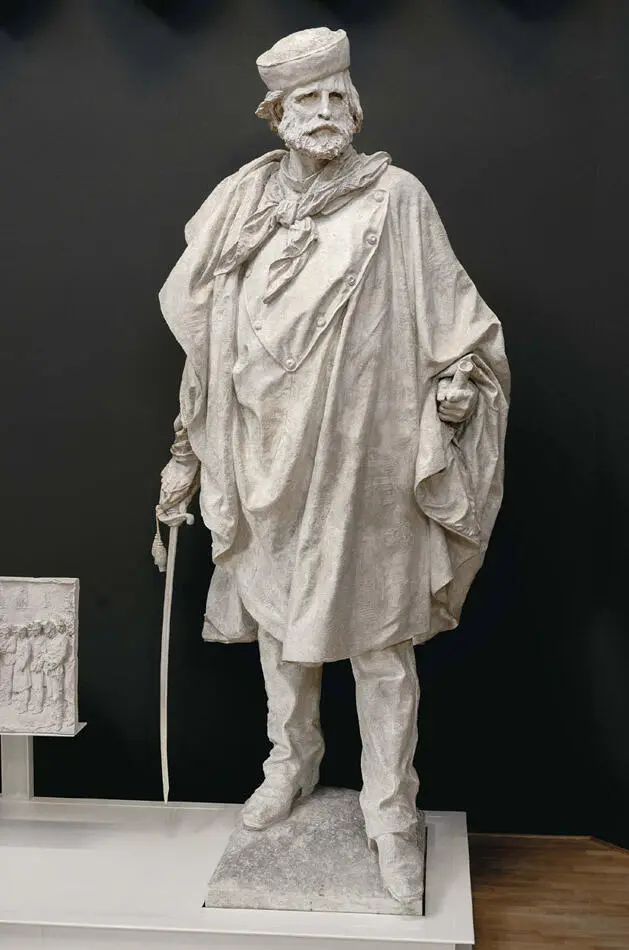
Vincenzo Vela, Monument to Giuseppe Garibaldi and the Como Days , 1888–1889, plaster original.
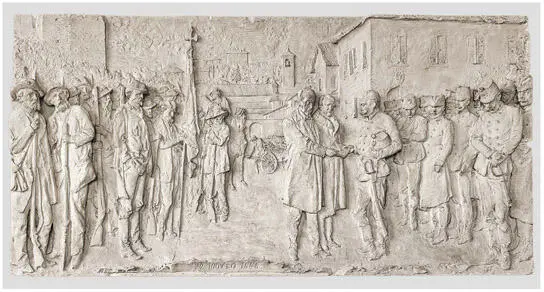
Vincenzo Vela, The Surrender of the San Francesco Barracks , a relief on the base of the Monument to Giuseppe Garibaldi and the Como Days , 1889, plaster original.
Greater justice would have been done to this art, which was ousted by the avant-gardes, soon forgotten and long underestimated by the critics, if its original function were understood and it were seen in its proper context. It offers us a multifaceted view of an era that is considered to have laid the foundations for the liberal democracies of the West. Now, after all the postmodern art, we can once again appreciate these sculptures – often diminished as kitsch – which, with respect to form and content, ought to be rightly considered representative of early modern art.
From this perspective the Museo Vincenzo Vela at Ligornetto, a house museum of the highest order, can play an exemplary role in encouraging an unprejudiced approach to 19th century art and in enabling the public to see the artist’s aesthetic ideals in relation to the aims of the sculpture of that period. The plaster originals, the small terracotta mod els, the drawings, the designs, and the photographs in the Museum’s collection permit the visitor to genuinely engage in Vincenzo Vela’s artistic concerns, far better than the monuments, damaged by exhaust fumes and pigeon excrement, scattered through northern Italy and Ticino.
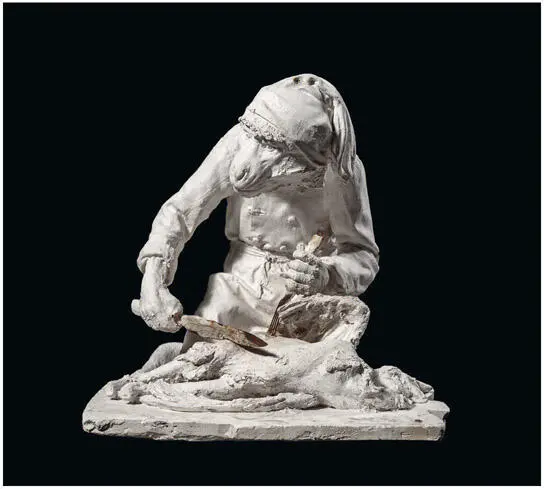
Lorenzo Vela, The Monkey Carving a Chicken , undated, plaster original.
Eight years older than his brother Vincenzo, Lorenzo Vela was born in Ligornetto on 4 July 1812. He began his training in 1832 in Milan as a stonecutter at Brera Academy, attending courses with the Ticinese Ferdinando Albertolli (1781–1844) in the Scuola d’Ornato . Stylistically, he is associated with the sculptor Benedetto Cacciatori (1793–1871), with whom he worked as the main collaborator in the beginning of his artistic career. From 1860 to 1891, he taught decorative sculpture at Brera, passing on his eclectic, historicist style to the successive generation of artists. He died in Milan on 10 January 1897.
Following the example of Vincenzo and Spartaco Vela, he bequeathed his possessions to the Swiss Confederation, including his prestigious collection of 19th century Lombard and Piedmontese paintings.
A respected artist himself during his lifetime, he is considered the true discoverer of Vincenzo Vela and was in fact soon eclipsed by his celebrated brother. Beginning in the early 1830s as a specialist in decorative sculpture in and around Milan, Lorenzo was in charge of decorating many buildings and tombs, by means of which he also created opportunities for his brother Vincenzo to work with the Lombard elite. The two brothers collaborated on various occasions, for example, on the Chapel of the Villa Borromeo d’Adda in Arcore. Beginning in the 1840s, Lorenzo concentrated on animal and genre sculptures made of plaster, marble and terracotta. While Lorenzo’s autonomous works such as Interrupted Study ( V) and Victim of the Inquisition (1860) show an affinity with Vincenzo Vela’s stylistic language, they have a more sentimental quality and do not achieve Vincenzo’s impressive formal refinement (see Vand VII).
Spartaco Vela (1854–1895)
Born in Turin on 23 March 1854, Spartaco Vela – the only son of Vincenzo Vela and the Milanese Sabina Vela Dragoni – settled in Ligornetto with his parents in 1867. After an early interest in science and medicine, Spartaco devoted himself to painting in accordance with the wishes of his father, who sent him to study with his friends Giuseppe Bertini and Eleuterio Pagliano at Brera Academy in the early 1870s. There he established a close relationship with the painter Mosè Bianchi and other artists on the Lombard scene, although he personally was not part of any particular group. He spent the last years of his life gravely ill in Ligornetto, where he died at the age of forty-one. As the executor of Vincenzo Vela’s will, he donated the house and all his father’s possessions to the Swiss Confederation.
The burden of expectations weighed heavily on Vincenzo’s introverted son. Despite his undeniable talent, he was never able to escape beyond the sphere of expertise of his father, whose work was inevitably the touchstone by which Spartaco’s work was judged. Although he was a skilled draughtsman, watercolourist and painter, he garnered little recognition, even from his artist friends. His artistic output was limited and few of his works are actually finished, and yet his works were favourably received in his day.
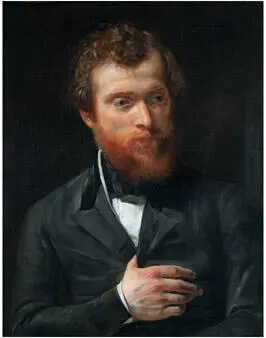
Carlo Felice Biscarra, Portrait of Lorenzo Vela , c. 1855, oil on canvas.
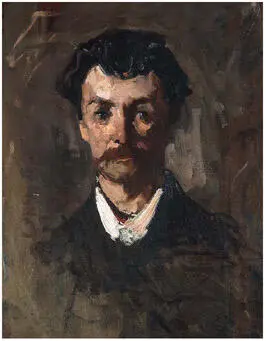
Cesare Tallone, Portrait of Spartaco Vela (detail), c. 1880, oil on canvas.
Читать дальше








